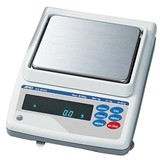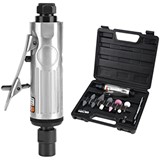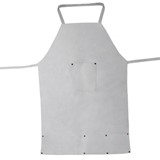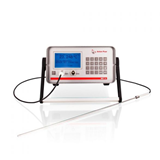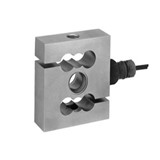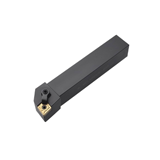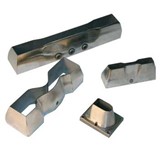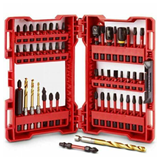Shop smart in Australia: Learn how to choose and budget for key safety tools like chucks, countersinks, and magnetic bases for your metalworking workshop.
Key Takeaways
- Workplace safety: In 2022, Australia recorded 195 workplace fatalities, with over 1,140,000 serious workers’ compensation claims over the past decade, highlighting the critical importance of safety in workshops.
- Digital calipers: Opt for models with an IP67 rating to ensure protection against dust and coolant, crucial for maintaining accuracy in harsh workshop environments.
- Magnetic lifters: Ensure compliance with AS 4991-2004, which mandates a safety factor of at least 3:1 for lifting devices, to guarantee safe handling of heavy materials.
- Bench grinders: Regularly inspect and maintain bench grinders, ensuring guards are in place and tool rests are properly adjusted, to prevent accidents and comply with safety standards.
Introduction
Selecting the appropriate safety and precision tools is essential for any workshop aiming to maintain high standards of safety and efficiency. This guide provides detailed insights into essential tools, helping you make informed decisions that align with Australian safety regulations and enhance your workshop's productivity.
Chucks: Keyed vs. Keyless
Keyed Chucks
- Advantages:
- Provide a stronger grip, suitable for heavy-duty applications.
- Ideal for high-torque operations where bit slippage must be minimised.
- Considerations:
- Require a chuck key, which can be misplaced.
- Slower bit changes compared to keyless options.
Keyless Chucks
- Advantages:
- Allow for quick and easy bit changes without additional tools.
- Convenient for tasks requiring frequent bit swaps.
- Considerations:
- May not provide as strong a grip as keyed chucks, potentially leading to bit slippage under high torque.
Buyer Tip: Assess the nature of your tasks to determine the appropriate chuck type. For heavy-duty, high-torque applications, a keyed chuck is advisable. For tasks requiring frequent bit changes, a keyless chuck offers convenience.
Countersinks
Types of Countersinks
- Single-Flute:
- Offer precise cuts, ideal for softer materials.
- Reduce chatter and produce smoother finishes.
- Multi-Flute:
- Suitable for harder materials.
- Provide faster cutting but may increase the risk of chatter if not used correctly.
Key Considerations
- Material compatibility: Choose the appropriate countersink type based on the material being worked on to prevent tool damage and ensure quality finishes.
- Angle selection: Common angles include 82°, 90°, and 100°. Select the angle that matches the screw head design for optimal seating.
- Speed and feed rates: Adjust machine settings to recommended speeds and feeds for the material and countersink type to avoid tool wear and poor finishes.
Safety Tip: Always wear appropriate PPE, including safety glasses and gloves, when operating countersinks to protect against flying debris and sharp edges.
Digital Calipers
Importance in Precision Measurement
- Digital calipers are essential for accurate measurements in various workshop applications, including quality control and part fabrication.
Key Features to Consider
- IP rating: An IP67 rating ensures protection against dust and coolant, extending the tool's lifespan in workshop environments.
- Material: Stainless steel construction offers durability and resistance to corrosion.
- Measurement range and accuracy: Ensure the caliper covers the required measurement range with an accuracy suitable for your applications, typically ±0.02 mm.
- Display and data output: A clear digital display and data output capabilities facilitate easy reading and recording of measurements.
Maintenance Tip: Regularly clean the caliper and check for calibration to maintain measurement accuracy. Store in a protective case when not in use.
Magnetic Base Stands
Role in Measurement Stability
- Magnetic bases provide a stable platform for dial indicators and other measurement devices, crucial for accurate readings.
Selection Criteria
- Magnetic strength: Choose a base with sufficient holding power to prevent movement during measurements.
- Adjustability: Flexible arms and fine adjustment knobs allow precise positioning of the measuring instrument.
- Base size and shape: Ensure compatibility with the workspace and the surfaces where measurements will be taken.
Usage Tip: Always clean the contact surfaces before attaching the magnetic base to ensure a secure hold and accurate measurements.
Bench Grinders
Importance in Material Preparation
- Bench grinders are used for sharpening tools, deburring, and shaping metal parts, making them indispensable in many workshops.
Safety and Maintenance Considerations
- Guarding: Ensure all guards are in place and properly adjusted to protect against flying debris.
- Tool rest adjustment: Maintain a gap of no more than 1.5 mm between the tool rest and the grinding wheel to prevent workpieces from becoming lodged.
- Wheel condition: Regularly inspect grinding wheels for cracks or wear and replace as necessary. Dress wheels to maintain a flat surface.
- Training: Operators should be trained in safe grinder use and understand the risks associated with improper handling.
Compliance Note: Adhere to Australian safety standards and guidelines to ensure safe operation and avoid workplace incidents.
Magnetic Lifters
Application in Material Handling
- Magnetic lifters facilitate the safe and efficient lifting of ferrous metal loads, reducing the need for slings, clamps, or other holding devices.
Compliance and Safety Factors
- AS 4991-2004 compliance: Ensure magnetic lifters meet the Australian Standard AS 4991-2004, which requires a minimum safety factor of 3:1.
- Load capacity: Select a lifter with a rated capacity suitable for the maximum load to be handled.
- Surface conditions: The effectiveness of magnetic lifters depends on the surface condition of the load; clean, flat surfaces ensure optimal performance.
Operational Tip: Regularly inspect magnetic lifters for damage or wear and conduct routine testing to ensure continued compliance and safety.
Cost planning & budgeting insights for safety and precision tools
Investing in quality tools like digital calipers, magnetic lifters and bench grinders is essential, but budgeting carefully ensures you get the best value.
Typical Australian price ranges (2025):
- Digital calipers (150–300mm): $20–$500
- Magnetic lifters (100–2000kg): $100–$1,000+
- Bench grinders (150–200mm): $50–$500+
- Keyed & keyless chucks: $10–$300+
- Countersink sets: $10–$150+
- Magnetic bases: $15–$200
Action: Plan your tool purchases aligned with your 12-month project schedule to avoid rushed or costly buys.
Safety & training resource guide (Australia-specific)
Safe tool use protects staff and ensures compliance with Australian WHS laws. Access these key resources for training and guidance.
Essential resources:
- Safe Work Australia: Codes of Practice on plant and equipment safety.
- Standards Australia: AS/NZS 4991 (lifting devices), AS 3765 (tool marking), ISO 9001 for measurement tools.
- Training.gov.au: RTOs offering mechanical safety units (e.g. MEM13014).
- State WorkSafe bodies (VIC, NSW, QLD): Local guidelines on tool safety and inspections.
Training tips:
- Include tool-specific induction for all new staff.
- Conduct quarterly toolbox talks on inspection, calibration, and lockout/tagout.
- Use SOPs and maintenance schedules for grinders and magnetic lifters.
Recommended actions:
- Download and tailor Safe Work Australia codes into your safety system.
- Schedule regular tool safety audits, especially for high-risk equipment.
- Keep tools tagged, recorded, and inspected as per WHS policies.
Embedding these practices reduces downtime, protects workers, and keeps you compliant under Australian law.
Frequently Asked Questions (FAQs)
Q1: What is the significance of the IP67 rating in digital calipers?
An IP67 rating indicates that the caliper is dust-tight and protected against temporary immersion in water, making it suitable for use in environments where exposure to dust and coolant is common.
Q2: How often should bench grinder wheels be replaced?
Bench grinder wheels should be inspected regularly for cracks, wear, and balance. Replace wheels that show signs of damage or have reached their wear limit to maintain safety and effectiveness.
Q3: Are magnetic lifters safe for lifting all types of metal?
Magnetic lifters are designed for ferrous metals. They are not effective on non-ferrous metals like aluminium or copper. Always verify the material's compatibility before use.
Q4: What maintenance is required for magnetic base stands?
Keep the base and contact surfaces clean to ensure a strong magnetic hold. Periodically check for mechanical wear and ensure that adjustment mechanisms function smoothly.
Q5: How do I choose between a keyed and keyless chuck?
Consider the application's torque requirements and the need for quick bit changes. Keyed chucks offer a stronger grip for high-torque tasks, while keyless chucks provide convenience for frequent bit swaps.
Conclusion
Investing in the right safety and precision tools is crucial for maintaining a safe and efficient workshop. By understanding the specific requirements and standards associated with each tool, you can make informed purchasing decisions that enhance productivity and comply with Australian safety regulations.


